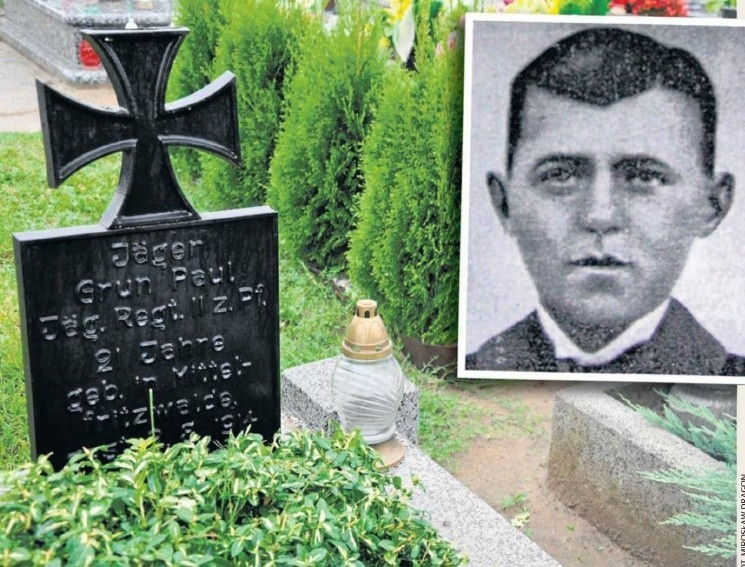Located in the woods a short distance outside the village of Illfurth in southern Alsace, is a war cemetery containing the graves of 1,964 German soldiers and officers who fell during the First World War.
Among them is the grave of Leutnant Albert Mayer of the 5th Jager zu Pferd. His grave marker has a special inscription on it marking him as the first German casualty of the First World War.

Mayer was a cavalry Leutnant in Jager Regiment zu Pferd Nr.5 (29th Cavalry Brigade of the 29th Infantry Division). On 2nd August, following the general mobilisation of the French, the 29th Division was rushed to the Franco-German border between Than and Switzerland. Lt Mayer was then ordered to head up one of a number of armed reconnaissance patrols that was deployed in the area to keep an eye on things.
Mayer's group ran into an advanced sentry position manned by a group of French infantry. In the resulting skirmish, Mayer wounded two Frenchmen using his sword and revolver. One of them, Corporal Jules Peugeot would eventually die of his wounds, becoming the first French casualty of the war.
The French didn't take it all sitting down, though and fought back. In the resulting fire fight, Mayer was shot in the head and died instantly.
Lt. Mayer was buried with full military honours in Joncherey on 3rd August, 1914 but his body was later moved to the Illfurth military cemetery near Mulhouse where he lays today in his specially marked grave.
But. Was he REALLY the first German casualty of the war??
According to some reports, about an hour earlier and some 700 miles away another German cavalry patrol - the Jager-Regiment zu Pferde Nr.11 were covering the German/Russian border and entered the border village of entered the village of Starokrzepic in what is now Poland. Within the patrol was a 21 year old trooper named Paul Grun.
There are a couple of different versions of what happened. One report suggests that the German patrol came across a Cossack unit. In the skirmish, Paul Grun was fatally hit by a bullet at close range. The report adds that he was buried like a dog under the fence of the cemetery and only after a few days, when the German army entered Starorzeszice, was Grun's body moved and buried in a nearby village.
Another version of the story was given by the the rector of a local school and involves a suspected Cossack sniper hiding out in the church tower. The rectors suggests that the sniper fired his rifle and hit Paul Grin flush, knocking him off his horse and killing him instantly. The rector gave the time as between 9.30am and 10am, which, if true, would make Paul Grun the first German soldier to be killed in the war.
Grun was buried in the nearby village of Bodzanowitz which the Nazis renamed Grunsruh (Grun's Rest) in 1937.


Comments